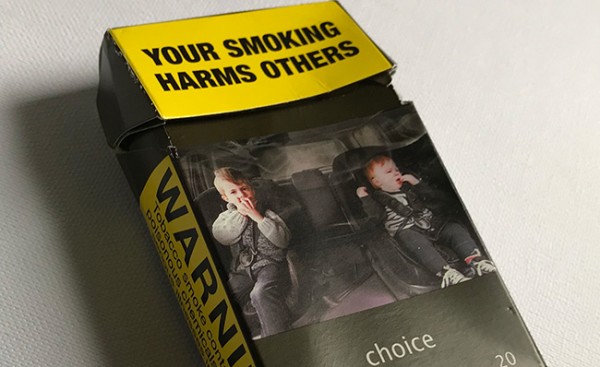References
- Hoek, J., Wong, C., Gendall, P., Louviere, J., & Cong, K. (2011). Effects of dissuasive packaging on young adult smokers. Tobacco Control, 20(3), 183-188. https://doi.org/10.1136/tc.2010.037861
- White, V., Williams, T., Faulkner, A., & Wakefield, M. (2015). Do larger graphic health warnings on standardised cigarette packs increase adolescents’ cognitive processing of consumer health information and beliefs about smoking-related harms? Tobacco Control, 24(Suppl 2), ii50-ii57. https://doi.org/10.1136/tobaccocontrol-2014-052085
- Waa, A. M., Hoek, J., Edwards, R., & Maclaurin, J. (2017). Analysis of the logic and framing of a tobacco industry campaign opposing standardised packaging legislation in New Zealand. Tobacco Control, 26(6), 629-633. https://doi.org/10.1136/tobaccocontrol-2016-053146
- Chipty, T. (2016). Study of the Impact of the Tobacco Plain Packaging Measure on Smoking Prevalence in Australia. https://www.health.gov.au/sites/default/files/study-of-the-impact-of-the-tobacco-plain-packaging-measure-on-smoking-prevalence-in-australia.pdf
- Bonfrer, A., Chintagunta, P. K., Roberts, J. H., & Corkindale, D. (2020). Assessing the sales impact of plain packaging regulation for cigarettes: Evidence from Australia. Marketing Science, 39(1), 234-252.
- Parada Jr, H., Hall, M. G., Boynton, M. H., & Brewer, N. T. (2018). Trajectories of responses to pictorial cigarette pack warnings. Nicotine and Tobacco Research, 20(7), 876-881.
- Hardcastle, S. J., Chan, D. C. K., Caudwell, K. M., Sultan, S., Cranwell, J., Chatzisarantis, N. L. D., & Hagger, M. S. (2016). Larger and more prominent graphic health warnings on plain-packaged tobacco products and avoidant responses in current smokers: A qualitative study [journal article]. International Journal of Behavioral Medicine, 23(1), 94-101. https://doi.org/10.1007/s12529-015-9487-x
- Erceg‐Hurn, D. M., & Steed, L. G. (2011). Does exposure to cigarette health warnings elicit psychological reactance in smokers? Journal of Applied Social Psychology, 41(1), 219-237.
- Ozarka, E., Teddy, L., Blank, M., Waa, A., & Hoek, J. (2024). Managing fear responses: A qualitative analysis of pictorial warning labels five years post-plain packaging. Nicotine & Tobacco Research. https://doi.org/DOI 10.1093/ntr/ntae112
- Thrasher, J. F., Swayampakala, K., Cummings, K. M., Hammond, D., Anshari, D., Krugman, D. M., & Hardin, J. W. (2016). Cigarette package inserts can promote efficacy beliefs and sustained smoking cessation attempts: A Longitudinal assessment of an innovative policy in Canada. Preventive Medicine, 88, 59-65.
- Hoek, J., & Robertson, C. (2015). How do young adult female smokers interpret dissuasive cigarette sticks? A qualitative analysis. Journal of Social Marketing, 5(1), 21-39.
- Hoek, J., Gendall, P., Eckert, C., & Louviere, J. (2015). Dissuasive cigarette sticks: the next step in standardised ('plain') packaging? Tobacco Control, 25(6), 699-705. https://doi.org/10.1136/tobaccocontrol-2015-052533
- Evans-Reeves, K., Lauber, K., & Hiscock, R. (2022). The ‘filter fraud’ persists: the tobacco industry is still using filters to suggest lower health risks while destroying the environment. Tobacco Control, 31(e1), e80-e82. https://doi.org/10.1136/tobaccocontrol-2020-056245
- Song, M.-A., Benowitz, N. L., Berman, M., Brasky, T. M., Cummings, K. M., Hatsukami, D. K., Marian, C., O’Connor, R., Rees, V. W., Woroszylo, C., & Shields, P. G. (2017). Cigarette Filter Ventilation and its Relationship to Increasing Rates of Lung Adenocarcinoma. JNCI: Journal of the National Cancer Institute, 109(12). https://doi.org/10.1093/jnci/djx075
- Hoek, J., Gendall, P., Eckert, C., Louviere, J., Blank, M.-L., & Thrasher, J. F. (2019). Young adult susceptible non-smokers’ and smokers’ responses to capsule cigarettes. Tobacco Control, 28(5), 498-505.
About the Briefing
Public health expert commentary and analysis on the challenges facing Aotearoa New Zealand and evidence-based solutions.
Subscribe

Public Health Expert Briefing
Get the latest insights from the public health research community delivered straight to your inbox for free. Subscribe to stay up to date with the latest research, analysis and commentary from the Public Health Expert Briefing.
